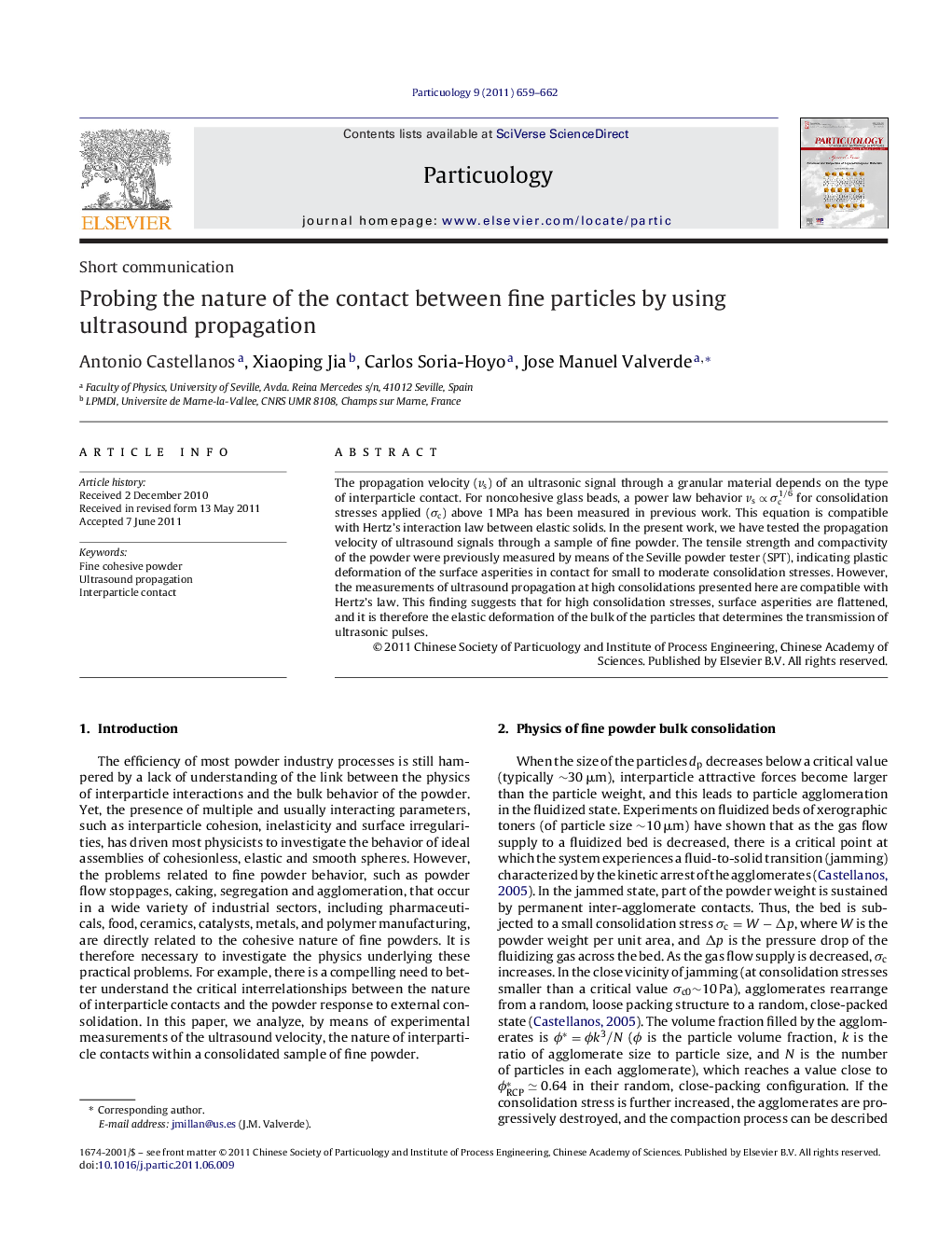| Article ID | Journal | Published Year | Pages | File Type |
|---|---|---|---|---|
| 672132 | Particuology | 2011 | 4 Pages |
The propagation velocity (vs)(vs) of an ultrasonic signal through a granular material depends on the type of interparticle contact. For noncohesive glass beads, a power law behavior vs∝σc1/6 for consolidation stresses applied (σc)(σc) above 1 MPa has been measured in previous work. This equation is compatible with Hertz's interaction law between elastic solids. In the present work, we have tested the propagation velocity of ultrasound signals through a sample of fine powder. The tensile strength and compactivity of the powder were previously measured by means of the Seville powder tester (SPT), indicating plastic deformation of the surface asperities in contact for small to moderate consolidation stresses. However, the measurements of ultrasound propagation at high consolidations presented here are compatible with Hertz's law. This finding suggests that for high consolidation stresses, surface asperities are flattened, and it is therefore the elastic deformation of the bulk of the particles that determines the transmission of ultrasonic pulses.
Graphical abstractThe measurements of ultrasound propagation at high consolidations presented here are compatible with Hertz's law, suggesting that for high consolidation stresses, surface asperities are flattened, and it is therefore the elastic deformation of the bulk of the particles that determines the transmission of ultrasonic pulses.Figure optionsDownload full-size imageDownload as PowerPoint slide
